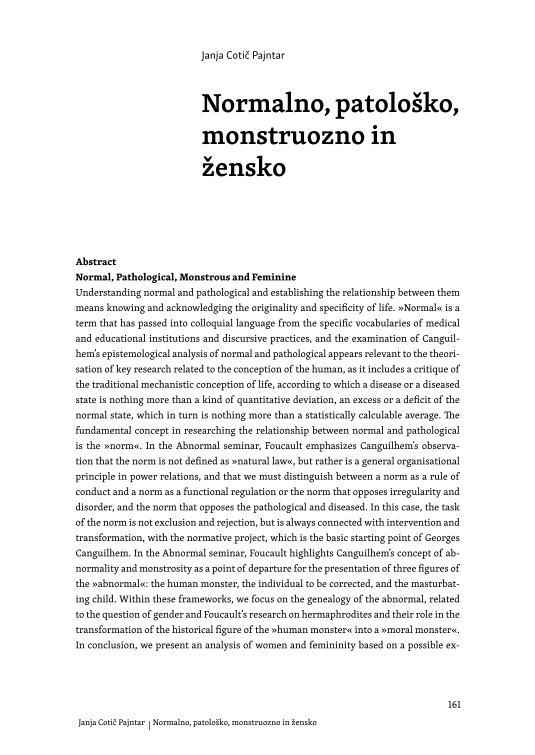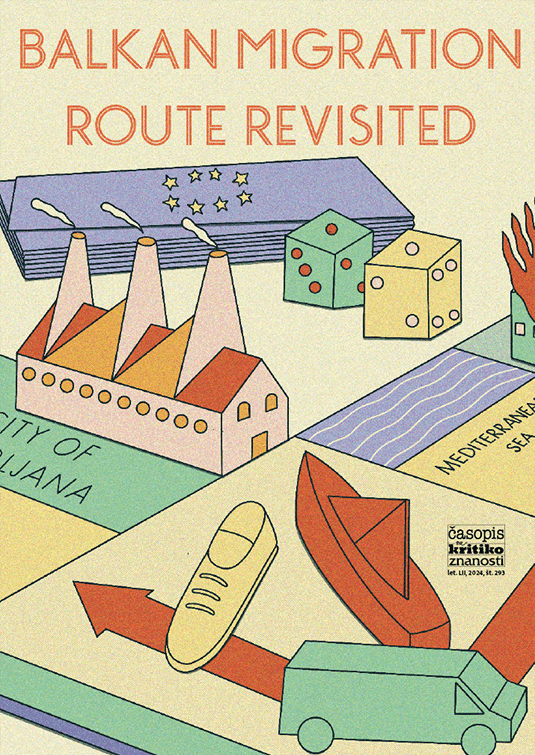Understanding normal and pathological and establishing the relationship between them means knowing and acknowledging the originality and specificity of life. »Normal« is a term that has passed into colloquial language from the specific vocabularies of medical and educational institutions and discursive practices, and the examination of Canguilhem’s epistemological analysis of normal and pathological appears relevant to the theorisation of key research related to the conception of the human, as it includes a critique of the traditional mechanistic conception of life, according to which a disease or a diseased state is nothing more than a kind of quantitative deviation, an excess or a deficit of the normal state, which in turn is nothing more than a statistically calculable average. The fundamental concept in researching the relationship between normal and pathological is the »norm«. In the Abnormal seminar, Foucault emphasizes Canguilhem’s observation that the norm is not defined as »natural law«, but rather is a general organisational principle in power relations, and that we must distinguish between a norm as a rule of conduct and a norm as a functional regulation or the norm that opposes irregularity and disorder, and the norm that opposes the pathological and diseased. In this case, the task of the norm is not exclusion and rejection, but is always connected with intervention and transformation, with the normative project, which is the basic starting point of Georges Canguilhem. In the Abnormal seminar, Foucault highlights Canguilhem’s concept of abnormality and monstrosity as a point of departure for the presentation of three figures of the »abnormal«: the human monster, the individual to be corrected, and the masturbating child. Within these frameworks, we focus on the genealogy of the abnormal, related to the question of gender and Foucault’s research on hermaphrodites and their role in the transformation of the historical figure of the »human monster« into a »moral monster«. In conclusion, we present an analysis of women and femininity based on a possible extension of Canguilhem’s research on normal and pathological along two possible paths of continuation. The first path leads through feminist theory, which connects mothers, monsters and machines, derived from Foucault’s reading of Canguilhem, which enables the introduction of Foucault’s poorly researched »woman’s question«, but leads him to the figure of the mother and limits it to the research of motherhood. The second path suggests the place Canguilhem assigns to psychoanalysis in the history of science, thematizing hysteria as pathological femininity and gender-specific abnormality in contrast to »normal« motherhood. It seems that it is with the help of Canguilhem that we can take a decisive step in the analysis of the woman who is not only a mother, but is connected to the figure of the hysteric and the research of »female« hysteria. In his late project of the »history of sexuality«, Foucault planned to investigate the relationship between the »woman, the mother and the hysteric«, but his untimely death prevented him from doing so.




